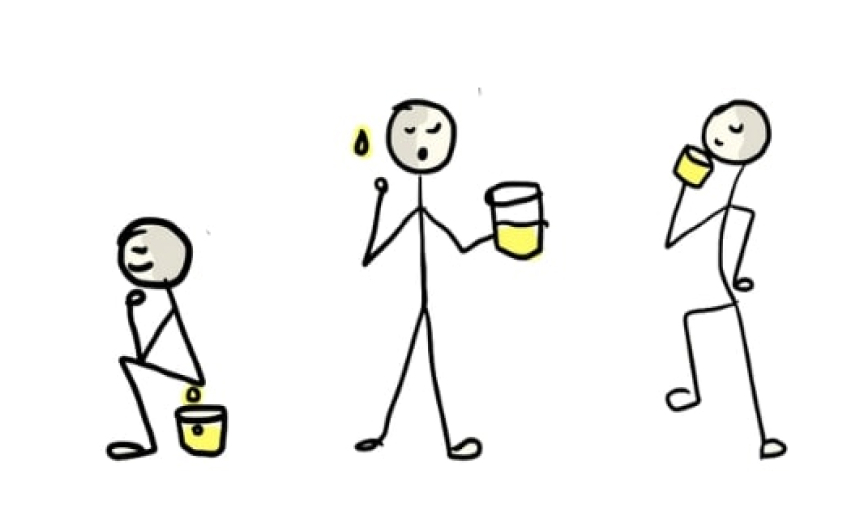What is Kapha Dosha

We are doing a series on the basics of Ayurveda. Strangely enough, in all these years, this is the first time we are going over What is Ayurveda, What is Vata Dosha, What is Pitta Dosha, and finally, What is Kapha Dosha. This is great information for beginners, but also for those who want to refresh their knowledge or get a few tips for a new Dosha imbalance they’ve encountered.
The Doshas represent different forces, and when you learn to recognize them in yourself, you can finally start to self heal, and actually thrive. The more we understand universal energy as such, the more we understand the forces of the universe, the more control we have over what we experience.
If you still don’t know which Dosha is more predominant in your constitution, I would recommend you take a Dosha test.
Control can be a loaded word for some people. What I mean is you will learn to optimize all aspects of your life in alignment with what you want to experience and actually designing the life you want. That, in many ways, is what Ayurveda is all about. It empowers you by understanding nature, your nature, the nature of your cells within your body and nature outside of you in your ecosystem.
What Is Kapha
So let’s crack into what is Kapha. Kapha is the force of nourishment. The word had its origin in two Sanskrit roots, Ka, which means water, and Pha, which means to flourish. In other words, Kapha is flourished by water. To visualize Kapha, just think of a bog, teeming with life.
Kapha is the energy that enables growth and repair. When we get injured or sick, Kapha is the force that helps us put ourselves together. It is a glue of consciousness that supports the generation of new life. And it is also what keeps our structure and stability. In fact, Kapha is responsible for the physical structure of the body, which means all tissues and all organs in your body.
Kapha is this energy of cohesion, of gathering. The Gunas, or qualities, that best describe Kapha are slow, cool, oily, liquid, slimy, dense, soft, and static. The lack of movement in Kapha comes from its secondary element, which is earth. You have fluidity from water, but containment from earth.
What Is Kapha Constitution
People with more Kapha in their constitution have more body. They are physically bigger people and tend to have big features. So people with bigger bone structures are usually Kaphas. They have big heads and square hips and shoulders. Kaphas tend to have a more endomorphic shape. There is also more musculature.
The physicality of Kaphas makes them have a tendency to be overweight. They’re naturally rounder, plumper. Women are naturally curvier. There’s a softness to their features, due to basically having more moisture in their body. So their eyes tend to be big and calm, their hips tend to be on the wider side.
Hair tends to be thick, often curly, often oily or wavy. They have big lips, usually strong teeth, and round noses. Chests tend to be big and expanded both in men and women. Kapha men might have a much broader chest and broad shoulders.
The appetites of Kapha are slow but steady. They can go a long time without eating, as their metabolism is slower than Vata or Pitta. They are also generally blessed with endurance. They can go long and strong, without needing any food or water. The same happens with their minds. They can maintain awareness for long periods of time.
Kaphas tend to make people feel good. They’re mellow, calm, reflective and fantastic listeners. Kaphas listen with their emotional bodies. And so they’re able to absorb and reflect. They are able to handle more because they move slower and have that reflective energy. Their mental processing is slower, but it’s precise. They have good recall and often have a great memory.
What Are Kapha Imbalances
Some of Kapha’s superpowers are also their biggest weaknesses. Sleep can be one of them. Kaphas, in general, sleep very deeply and only need about six hours of sleep a day. But one of the ways Kaphas can go out of balance is by sleeping too much, as sleep comes so easily for them.
With Kapha, the challenge is to keep the energy moving. Kaphas need to work on becoming flowing rivers. They are great accumulators and tend to accumulate mucus and fat. This happens because their digestions are slow. In fact, they can have trouble digesting heavier foods that slow their digestion down. Because their bodies easily create mucus, foods like mac and cheese with lots of cream in it can be incredibly detrimental to their health, and can aggravate their already slow elimination system.
Kaphas may get into trouble when they try to eat as much as their Vata or Pitta counterparts. They shouldn’t snack, and thrive when they practice intermittent fasting. They should only eat twice a day. For example, they can have one meal at 12 pm and one meal at 6 pm.
You can get a Kapha moving with caffeine. They can handle it, they have such a robust constitution that they can handle the adrenaline hit that comes from caffeine. And they should use it towards exercising. Kaphas should exercise regularly in the morning, when the Kapha energy is not predominant. In my opinion, Kaphas shouldn’t wake up, hydrate, eliminate, sit and meditate. They need to burn calories and generate heat. Heat generates sweat, which evaporates moisture, and that is the best thing for a Kapha to do.
I hope you now have a better understanding of what is Kapha dosha and how you can best balance this nourishing energy in your life. You can find more tips on our Tip Sheets. If still, you think you could benefit from more help, you should check our Living Ayurveda program.















Comments
No comments yet, be the first to comment